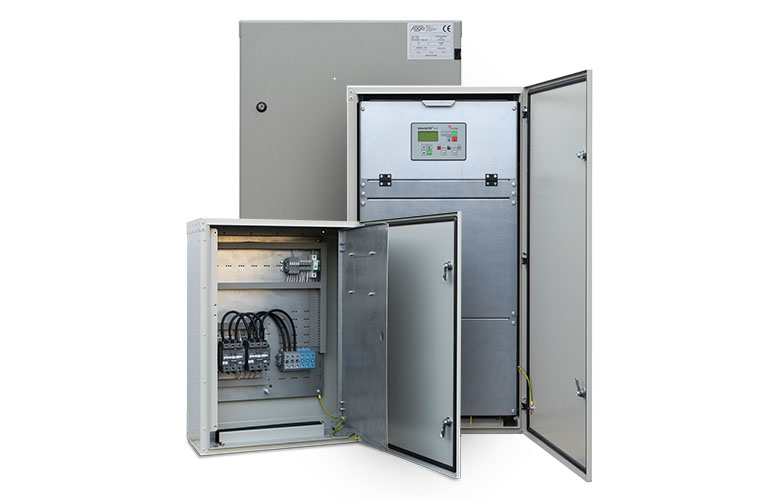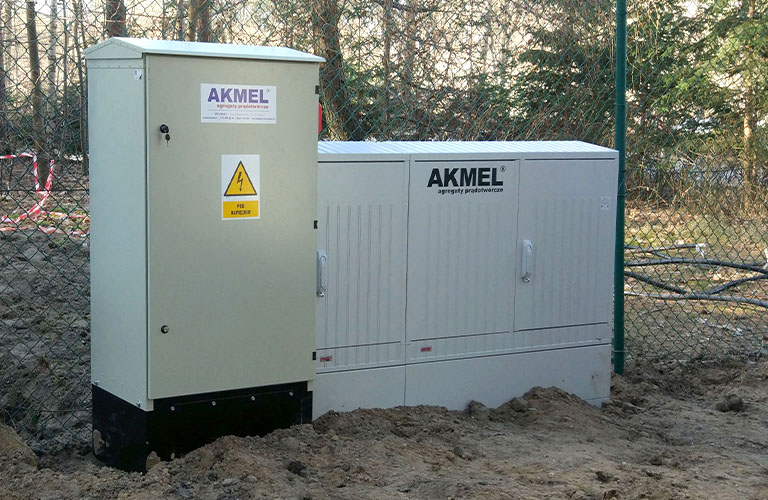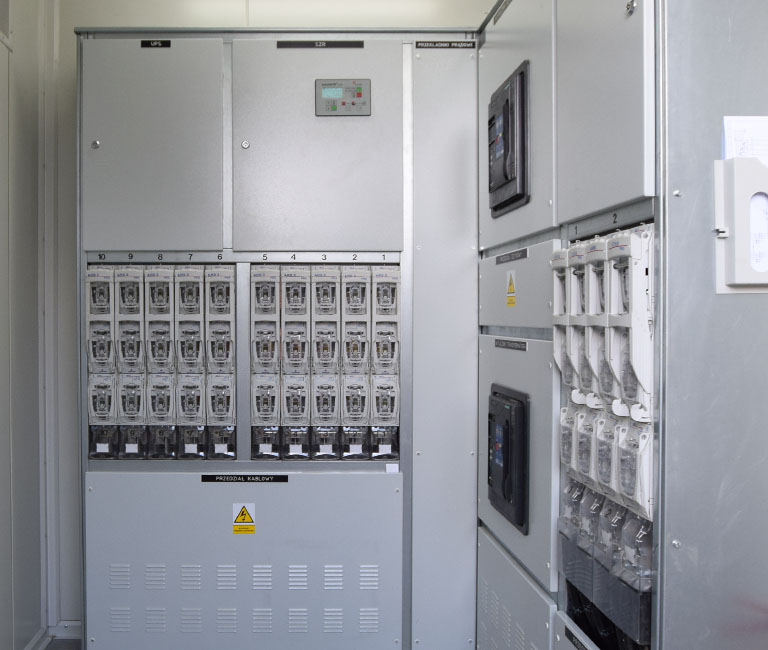Zadaniem systemu samoczynnego załączania rezerwy (SZR, ATS) jest samoczynne uruchomienie agregatu prądotwórczego po zaniku napięcia z sieci. Jest to szafa z układem styczników, rozłączników lub przełącznikiem, która współpracuje z agregatem odcinając prąd z sieci i podając na obiekt napięcie z generatora.
Types of ATS.ATS cabinets can be divided according to the type of equipment used and the type of generator operated. In petrol engines, ATS have slightly different functions than for diesel generators, because the starting cycle of the carburettor engine requires other steps, e.g. operation of the choke actuator. In the case of industrial generators with diesel engines, the purpose of the ATS cabinet may boil down to sending the start/stop signal to the generator controller; in simplified versions, even the controllers installed in generators are able to manage the devices installed in the ATS cabinets. |
Application of the ATS systemATS cabinets are used in locations requiring immediate supply of voltage from the generator to receivers. Complex ATS systems are often used in enterprises or public buildings. Such equipment is designed to continuously monitor the grid. These systems can be adjusted to the user's needs by setting the parameters according to which the backup system is switched on or off. Places such as single-family houses where the user wants to install an automation system with an ATS cabinet do not require a purchase of complex solutions. All it takes is a simple system for monitoring the loss and restoration of power, controlling the generator according to the situation. |
Principle of ATS operationBoth in simplified and extended versions, the principle of ATS operation is the same. The system monitors the grid where it detects a power outage or optionally inappropriate voltage values in the mains supply. This cuts off the mains supply and sends a start signal to the generator. A delay is set in each ATS cabinet, which can be programmed to avoid activating the generator during power outages of only several seconds. It usually oscillates around 15 seconds. After this time, the generator engine starts, and after stabilising the alternator voltage, the voltage from the generator is fed to the receivers. The whole process takes 30 to 60 seconds. This depends, among others, on the type of generator, the place where it is installed, and sometimes weather conditions. While the generator is running, the ATS cabinet keeps monitoring the grid for voltage recovery. In the case of restoration, the generator shuts down, but the engine is not turned off yet. Power is provided from the mains, while the generator continues to run for about 2 minutes to confirm that the power has been restored permanently. This allows you to avoid unnecessary switch off and start of the power generator in the case of short-term voltage restoration. In turbocharged diesel engines, this also lets the turbine to stop slowly, while the engine goes to idle, which is good for its service life. |
We encourage you to check our range of ATS cabinets. Our sales department will be happy to help you select the right machine for your needs.






